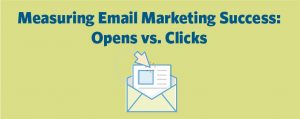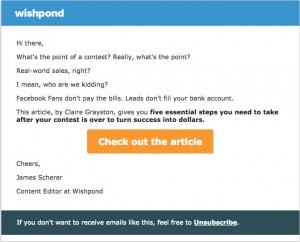
One of the most important parts of editing content is fact-checking. If you write something that’s not totally accurate, people will notice and you will be called out on it. It’s an easy way to damage your reputation and stop readers from coming back to your site.
There’s far more to fact checking than just Googling something to double-check it’s accurate. Here’s how to do it properly.
Know what needs to be fact-checked
Dates
When reading through and editing someone’s article, there are a number of things that should stand out as prime candidates for double-checking. Dates are an important one, whether you’re talking about what year the Great War began or an upcoming company event.
 It will only take a quick search to confirm whether the date of a big, important event is correct, but for anything smaller you’ll need to check the original source. Don’t forget about periods of time either. You don’t want to mention a specific date and then claim it was the Victorian period, when it was, in fact, the Edwardian. If you are repurposing website content, please remember to re-check that any stats used are still current.
It will only take a quick search to confirm whether the date of a big, important event is correct, but for anything smaller you’ll need to check the original source. Don’t forget about periods of time either. You don’t want to mention a specific date and then claim it was the Victorian period, when it was, in fact, the Edwardian. If you are repurposing website content, please remember to re-check that any stats used are still current.
Names
A spell checker will pick up most grammar and spelling mistakes, but it won’t know if you’ve got someone’s name correct or not. Spelling a name incorrectly, or getting it wrong completely, can cause you to lose valuable contacts, so don’t forget to check. Furthermore, many names are shared between the sexes, so it can be easy to refer to someone as ‘he’ when actually, they’re a ‘she’. It doesn’t take two minutes to look this up, so make sure you check before hitting publish.
Getting brand names right is equally important and it’s all too easy to make a mistake. For example, the Sony brand PlayStation needs an uppercase ‘s’, not a lowercase one. This may not seem like a big deal to some, but a gaming website would look unprofessional if something like this slipped through the net.
Brands can be very particular about the way their names are spelt, spaced and capitalised, and getting it wrong might cause some upset, whilst also making you look foolish.
Quotes
With quotes, you need to ensure that no words are missing, or the quote hasn’t been cut to change its original meaning. Misquoting someone will not only anger them, it can also potentially become a legal issue.
Numbers
All figures, percentages, and monetary amounts also need to be verified. An all-too-easy slip of the finger can change the entire meaning of a news story, article or infographic.
Passed away
Lastly, if the article mentions ‘the late Joe Bloggs’, make sure Mr. Bloggs has actually passed away. At the same time, if someone is talking about someone as if they are alive, but you suspect they are not, trust your instincts and look it up.
Double-check everything, even if you think it’s right
 Although it’s good to think like a journalist and trust your instincts, you shouldn’t rely on them completely. You might think you know how to spell a certain actor’s name, but you should always double-check just in case you’ve got it wrong.
Although it’s good to think like a journalist and trust your instincts, you shouldn’t rely on them completely. You might think you know how to spell a certain actor’s name, but you should always double-check just in case you’ve got it wrong.
Spending a couple of minutes looking something up is going to be far easier than dealing with angry phone calls and emails when you get something wrong. Even if you didn’t write the original piece, if you ok it and something isn’t right, you are just as responsible for the mistake.
Fact-checking news stories
When fact-checking news stories, the best way to begin is to find the writer’s original sources. Double-check to see if all the dates, names, facts and figures stated match up across all the sources. If they don’t, you need to find out which version is correct.
For example, if the story is about a VisitEngland study, you should be able to find the original source by visiting its website or social media page.
Not every company or organisation puts press releases on their own websites, though. If no original can be found, it’s best to contact them directly.
Fact-checking longer-form content
When reading through a piece of long-form for spelling and grammar errors, establish what the facts are too. Once you’ve read the piece, go back and verify all the facts you highlighted. Even if the journalist or writer has hyperlinked a source within the piece, click-through to ensure they’ve cited the original source and the link actually works. When you work with external content agencies or suppliers, fact checking is often just part of the content creation process, however, in-house, this is something that can be easily overlooked.
Fact-checking a long-form piece is a lot like editing a news story, except it is much more in-depth and therefore takes longer. If, for example, you’re editing a piece about cars, you’ll need to check every single specification quoted, such as model name, top speed, sales volumes, etc.
When verifying statistics and numbers, ensure the writer has used the most up-to-date example. If the research is five years old, it won’t be very accurate and you might be able to snoop out a better, more recent example.
Sites to help you fact-check fast

Snopes.com is a great site for helping you separate fact from fiction. The internet is home to many urban legends, as unfortunately, it is all too easy to spread around false information. So, if a writer makes a statement, doesn’t source it and everything looks a bit fishy to you, search for it on Snopes. Including a common misconception in an article can make you look foolish, especially if you’re supposed to be the expert in a particular field.

The Trooclick app, which can be installed in your browser, helps you detect inaccuracies within a source. It works in real-time and is ideal if you have several sources quoting different figures or numbers.
In the age of the internet, there really is no excuse for getting something wrong. Even the smallest of errors can have an impact on your business. Having to wait a day or two to publish a piece because you need to confirm a fact or name is better than dealing with angry readers or losing sales.
Business & Finance Articles on Business 2 Community(88)









